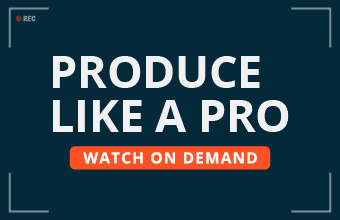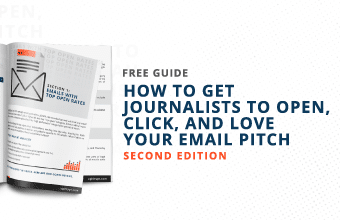The year was 2005. Friendster and Myspace led the social networking world, Facebook and LinkedIn were both in its infancy, and Twitter was #nonexistent.
As far as the media environment, the central economic question in journalism was how long it would take online journalism (which was expected to take in $12 billion in ad revenue in 2005) to become a major economic engine, and whether it would ever be as big as print (which brought in $49 billion in ad revenues in 2005). This according to PewResearch Center’s 2006 State of the Media Report.
Fast forward 10 years, and social media has influenced the news media in ways no one anticipated.
In PewResearch Center’s 2015 report on the evolving role of news on Twitter and Facebook, it was uncovered that the share of Americans for whom Twitter and Facebook serve as a source of news is continuing to rise. According to the report, users of Twitter (63%) and Facebook (63%) say each platform serves as a source for news about events and issues outside the realm of friends and family.
Even journalists say they use social media to keep up with the news more than newspapers.
On top of that, a decade later, the economic question of how long it would take online journalism to trump newspaper revenue has been answered. According to the 2015 State of the Media Report, $50.7 billion was spent on digital news ads in 2014, including mobile; compared to newspaper ad revenue which reached $19.9 billion in 2014.
There’s no question that the evolving media industry has had a huge impact on how my role as a PR practitioner has changed over the last ten years. Despite these changes, some of the basic fundamentals of how we counsel clients and interact with the media have remained the same.
The key questions at the forefront when having conversations with thought leadership spokespeople have consistently included:
- How can we tell your story in a way that informs, educates and inspires your priority stakeholders?
- What can you bring to the table that is different from what has already been covered in the media and allows you to stand out from similar experts?
- What is truly keeping your clients up at night, or what should be that they are not aware of?
While a number of other questions are part of the initial dialogue, it are these specific questions that have allowed me to develop thought provoking pitches that grab the attention of reporters.
In this same vein, the way I interact with reporters has also fundamentally stayed the same. A presentation given by Dan Pink on the ABC’s of persuading made this even more apparent. According to Pink, you can close any deal as long as you are “Attuned, Buoyant and Clear”.
How does all of this relate to my interaction with reporters?
- Attunement is the ability to understand the perspective of your prospects and more broadly, see things through their eyes. While empathy and understanding of emotions is part of this equation, understanding someone’s thinking is really what it’s all about. In the world of pitching reporters, attunement is definitely something that comes into play before I hit send on any email to a reporter, as I make sure to think about the following: How is my source going to be able to add value to the current reporting they’ve already been doing on this topic? What new perspective can they offer that hasn’t already been covered?
- Buoyancyrefers to being optimistic and resilient, especially given how many times people will say no to a solicitation. While attunement certainly has increased my chances reporters say “yes” to my pitches more than “no”, in the last decade I’ve also had my fair share of reporters who have hung up on me. While it’s easy to give up after being faced with such rejection, instead of getting frustrated and deflated, I’ve challenged myself to think outside the box, revamp my pitches and find new contacts who see value in what I’m offering. This ability to recover and move on in spite of rejection has been pivotal for me in a highly competitive media relations market.
- Clarity is the ability to succinctly get your prospect relevant information in a short, easy, compelling summary that identifies the precise problem or issue as quickly as possible. The clarity technique is really the golden rule that PR practitioners learn right out of the gate, but often times the hardest one to perfect. My ability to be both economical (email pitches are as short as possible) and straightforward (get to the point quickly) when pitching reporters has definitely helped me catch the attention of reporters over the last decade.
So what has changed?
Public relations is all about influencing audience behavior, wherever those audiences live, and there’s no question that the number of tools available to reach these audiences has increased insurmountably over the last decade. When I started my career the primary means of communicating with audiences was limited to paid media (advertising and direct marketing) and earned media (PR placements). Advances in social media have really been a game changer by way of directing the conversation for our clients.
In addition, while content marketing has always existed in some regard for most b2b companies with a strong POV to share, it’s become a new buzz word over the last 5 years that has also redefined our profession.
So what will the next 10 years look like?
In 2011/12, PRSA led an international effort to modernize the definition of public relations and replace a definition adopted in 1982 by the PRSA National Assembly. PRSA initiated a crowdsourcing campaign and public vote that produced the following definition:
“Public relations is a strategic communication process that builds mutually beneficial relationships between organizations and their publics.”
While it’s very possible this definition will continue to evolve in the next 10 years to keep up with our changing roles and the technological advances at our finger tips—the ability to build mutually beneficial relationships, especially with reporters will become increasingly important in the crowded and fast paced media landscape.
Guest contributor Lisa Seidenberg is Associated Vice President, Media Relations at Greentarget; a strategic public relations firm focused exclusively on business-to-business organizations. Article first appeared on BulldogReporter.com.










